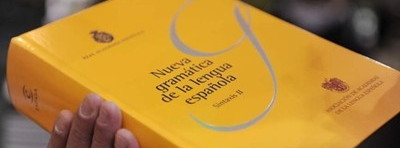 presente histórico/narrativo
presente histórico/narrativo
Both English and Spanish use the historic present to narrate events in the past using the present tense in order to bring the event to life and make the story more entertaining. Spanish uses this style frequently when describing historic events or biographies, as well as in everyday conversation. This use of the present tense is generally a lot more limited in English (except in storytelling), where it can often be found translated using the past simple.1
Spanish differentiates between the so-called presente narrativo and the presente histórico. They are basically the same thing except the former is used along with events referred to in the past tense, thus breaking up the flow of the narration and making it more dynamic (often in conversation); whereas the presente histórico is generally used by historians and the like to describe historical events that took place at different times (usually written). As discussed previously, the historical/narrative present is favoured after the adverbs casi and por poco.2
-En 2001 Juan decide cambiar de oficio.... — In 2001 Juan decides (decided) to change his trade...
-Al descubrir la verdad, Felipe se marcha a Madrid; comprende que tendrá que despedirse de su madre — Upon discovering the truth, Phillip sets off for Madrid; he realises he will have to bid farewell to his mother
-Acepta el cargo con mucha ilusión, pero dimitirá al poco tiempo — He accepts (accepted) the position with great enthusiasm, but resigns (resigned) shortly after [Used with the historical future]
-Ayer tuve un día terrible. Te cuento: llego a casa y veo que está todo patas arriba... — Yesterday I had an awful day. So... I come home and I see the house is a complete mess...
-Iba por la calle tranquilamente a mi bola cuando se me acerca un tipo raro..... — I was walking along the street minding my own business. when this weirdo comes up to me...
In this extract from the biography of San Juan de Dios, we can appreciate how the present is mixed with the past:
Cuando aún no contaba con doce años, se establece en Torralba de Oropesa, (Toledo), (España), en la casa de Francisco Cid Mayoral, al cual sirvió como pastor. A la edad de 27 años, (1523) se alistó en las tropas del capitán de infantería Juan Ferruz, quien a su vez estaba al servicio del Emperador Carlos I, en la defensa de Fuenterrabía, contra las tropas francesas. Fue para él una dura experiencia, siendo expulsado por negligencia en el cuidado de las ganancias de su compañía (se salvó en el último momento de ser ahorcado). A pesar de ello, volvió a combatir en las tropas del conde de Oropesa en 1532, en el auxilio de Carlos V a Viena, sitiada por los turcos de Solimán I.
Al desembarcar en España por la costa gallega, siente la necesidad de entrar en Portugal y reencontrarse con sus orígenes. Pero este deseo se ve seriamente frustrado: sus padres han muerto; tan sólo queda su tío. De allí pasa a Andalucía y estando de paso en Gibraltar decide embarcar para África. En su mismo barco, encuentra al caballero Almeyda, su mujer y sus cuatro hijas, todos ellos desterrados a Ceuta por el rey de Portugal. El padre le contrata como sirviente, pero pronto cayeron todos enfermos, gastando la poca fortuna que traían, viéndose en la necesidad de pedir socorro a Juan de Dios. Este, mostrando ya la enorme caridad que le convertiría en santo, se pone a trabajar en la reconstrucción de las murallas de la ciudad, permitiendo que de su salario comiesen todos. Más tarde pasa a Gibraltar, donde se hace vendedor ambulante de libros y estampas. De ahí se traslada definitivamente a Granada en 1538, y abre una pequeña librería en la Puerta de Elvira. La librería le permite entrar en contacto con la literatura de tipo devocional y religioso. 3
Compare with this excerpt from Dickens' David Copperfield, where the author shifts from the past tense to the historical present to give a sense of immediacy, as of a recurring vision:
See other present simple uses here.
In Español-Avanzado Articles
˜
-presente histórico/narrativo-

